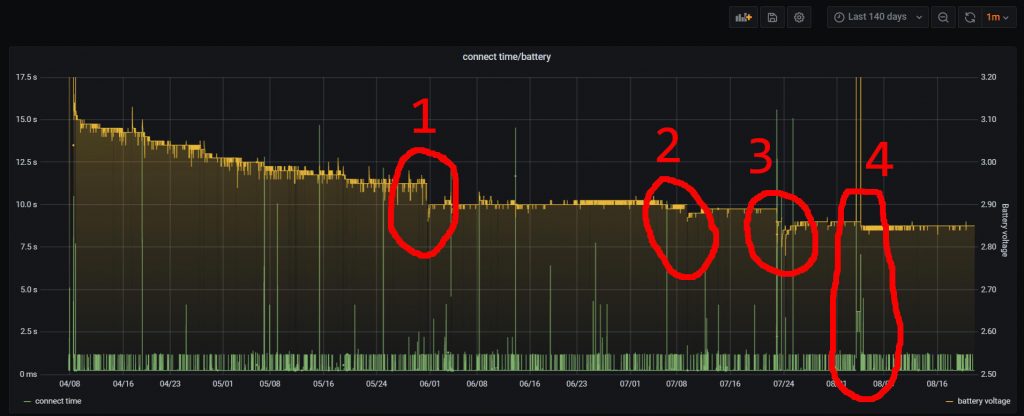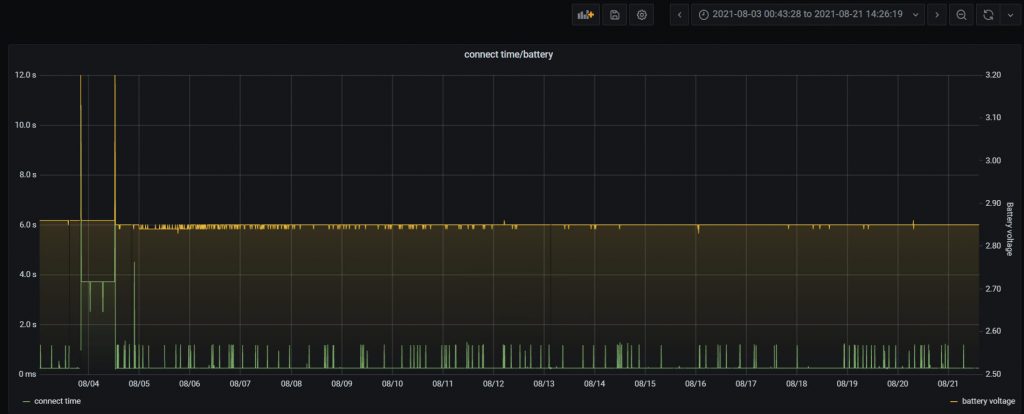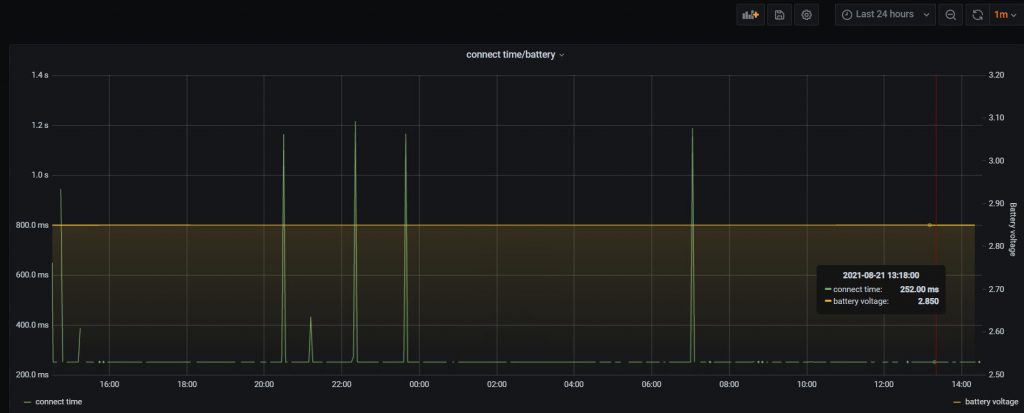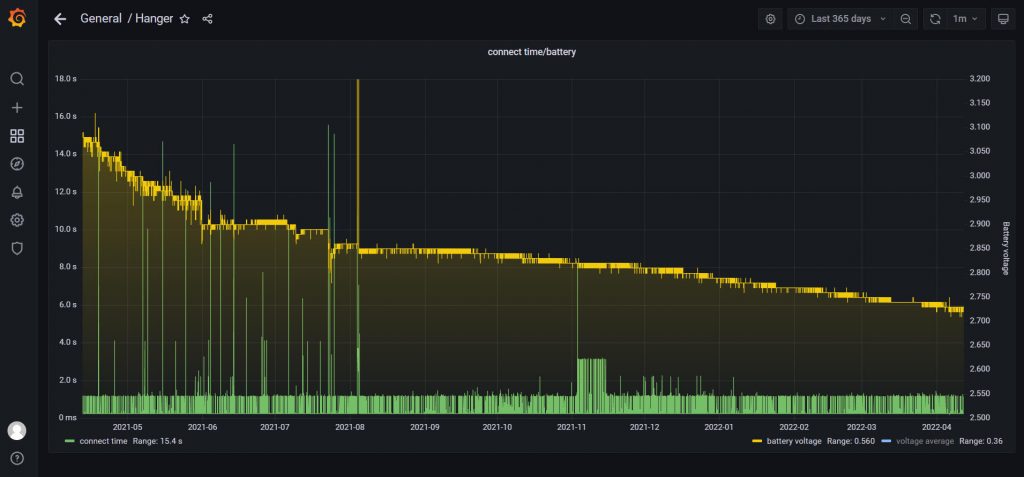So how long would a simple configuration last running on batteries…
Only one way to find out.
The circuit is very basic. An ESP12 module on a carrier, the required pull up/down resistors, and a HTU21D humidity/temperature sensor. Power source is 2 alkaline C-cells. No regulator, just powered direct from the batteries.
The two C-cells measured about 3.15V to start and the ESP data sheet says it runs down to 2.5V. Data is read from the sensor every 3-min then posted by UDP packet to a local Influx-DB on a Raspberry-Pi. UDP because its fast and the occasional lost packet is not an issue for this function.

This is the 1st (nearly) 6-months.
The steps at 1,2,3 were because when the ESP wakes up from sleep and tries to connect, on these occasions the local WiFi was missing so instead of just going back to sleep, it kept trying to connect. This had a significant impact on the battery. I found it interesting that after the battery takes a bigger discharge-hit, it recovers somewhat in the time after. This can be over several days or a week or more.
4 was when i decided to tweak the software and fix the constant-retries issue but then I discovered that a breaking-change happened when I upgraded from ESP (arduino) 2.74 to 3.02.
Now WiFi defaults to WiFi OFF at the start of a sketch so every connect takes longer. Another battery-hit from that one! Till I found the fix to change behaviour back to the old-method of WiFi ON at startup.
The green spikes are WiFi connect time. These vary considerably. This is a closer view of number 4 above.

Some connect times (in the early days) are over 10-sec which is a terrible waste of battery power. This is now changed so if no connection by 2.5-sec, it just goes back to sleep. No more retries if it fails (1,2,3 above), it now just shuts-down and tries again later. 2.5-sec is probably still too high as the green spikes for connect times are about 1.2-sec. It looks like if its not connected by 1.5-sec then its not going to happen is a sensible timescale.

This is 24hrs at the head of the graph. Almost all of the connect times are 253ms. This is slightly longer after the V3.02 changes. 247ms was the V2.74 baseline. Sometimes a 1.2-sec connection but the vast majority are pretty fast. Some gaps due to missing packets which could be because its UDP (and not a great environment), or possibly >2.5-sec WiFi timeouts. The time is measured from when millis() starts counting (prior to the user sketch beginning) till just before the UDP post.
Now the constant-retries has been fixed, and the attempt-connect time reduced to 2.5-sec it seems believable that I might get a year from this set of batteries. Battery voltage is now down to 2.85V from the starting 3.15V.
The early discharge rate was quite steep due to a combination of software (constant retries) and the initial discharge behaviour of the batteries but this has flattened out now. The major step (1) in the first graph probably lost a month or more of runtime.
Apart from my dodgy software, its doing a lot better than I thought it would. Running a WiFi sensor from batteries had never seemed that practical to me but it looks like it is more realistic than I had initially thought. Maybe it will manage a year, maybe not. Time will tell.
12/Apr/2022
One year later and still going…

